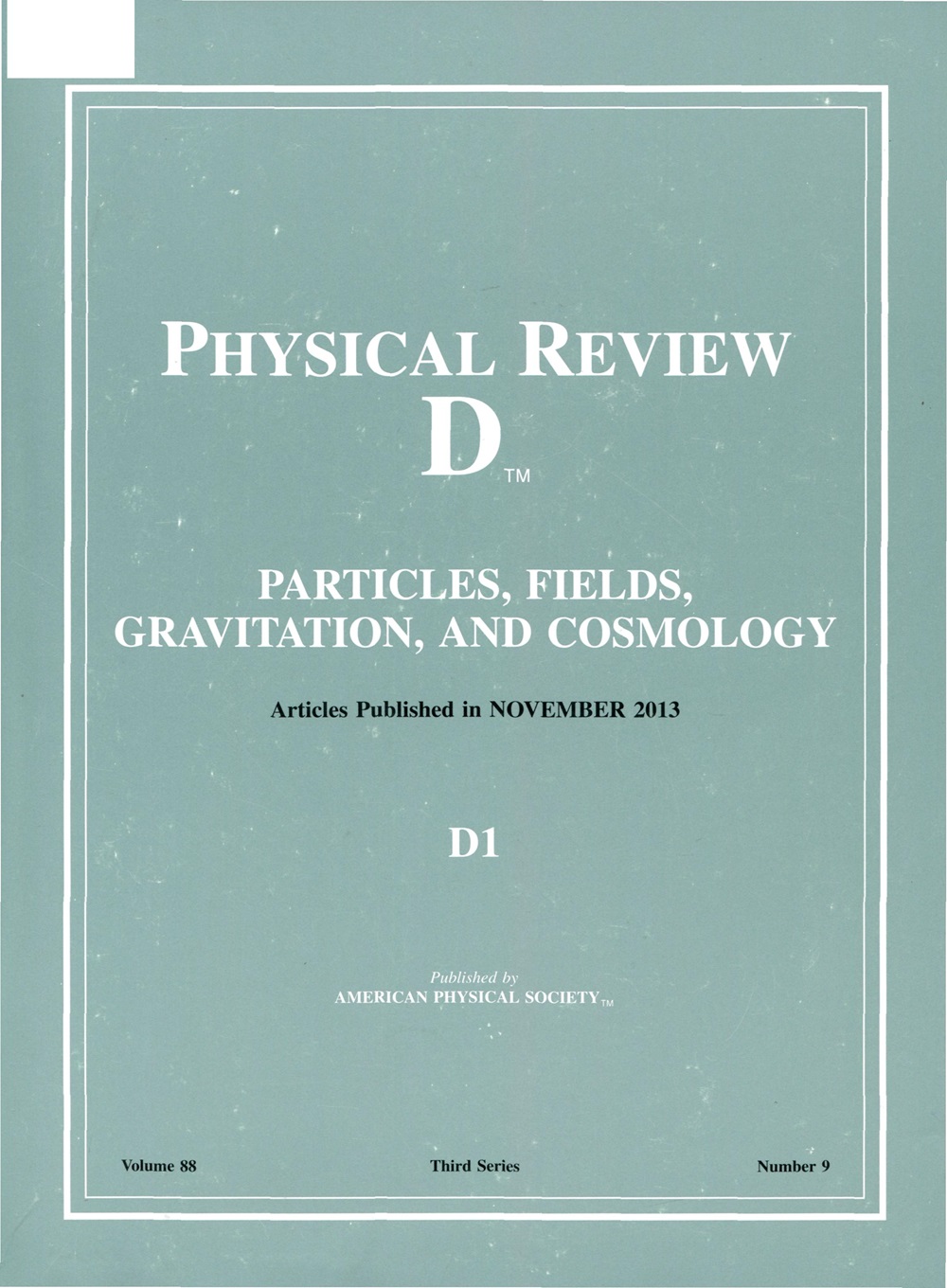有限密度下N=4超对称杨-米尔斯理论的不稳定性
IF 5
2区 物理与天体物理
Q1 Physics and Astronomy
引用次数: 0
摘要
N=4超对称杨-米尔斯理论的平衡态可以用温度和三个化学势来表征,对应于r -对称群的U(1)3子群。我们利用Behrndt的五维超重力解,研究了平面空间中大正则系综中强耦合理论的相图。体作用包括度规场、三个阿贝尔规范场和两个中性标量场。带电黑膜描述的平衡态在低温下总是热力学不稳定的。具有多个守恒电荷的相对论流体力学预测了热力学不稳定性伴随着动力学不稳定性,相应的Hessian的特征值和特征向量在识别不稳定模态中起着关键作用。我们明确地证明了这三个相等的化学势,找到了描述r电荷扩散的不稳定的准正态模式。因此,具有等化学势的N=4超对称Yang-Mills理论的低温相不能用AdS-Reissner-Nordström黑膜来描述。2025年由美国物理学会出版本文章由计算机程序翻译,如有差异,请以英文原文为准。
Instability in N=4 supersymmetric Yang-Mills theory at finite density
Equilibrium states of N=4 supersymmetric Yang-Mills theory can be characterized by the temperature and three chemical potentials, corresponding to the U ( 1 ) 3 R R N = 4 Published by the American Physical Society 2025
求助全文
通过发布文献求助,成功后即可免费获取论文全文。
去求助
来源期刊

Physical Review D
物理-天文与天体物理
CiteScore
9.20
自引率
36.00%
发文量
0
审稿时长
2 months
期刊介绍:
Physical Review D (PRD) is a leading journal in elementary particle physics, field theory, gravitation, and cosmology and is one of the top-cited journals in high-energy physics.
PRD covers experimental and theoretical results in all aspects of particle physics, field theory, gravitation and cosmology, including:
Particle physics experiments,
Electroweak interactions,
Strong interactions,
Lattice field theories, lattice QCD,
Beyond the standard model physics,
Phenomenological aspects of field theory, general methods,
Gravity, cosmology, cosmic rays,
Astrophysics and astroparticle physics,
General relativity,
Formal aspects of field theory, field theory in curved space,
String theory, quantum gravity, gauge/gravity duality.
 求助内容:
求助内容: 应助结果提醒方式:
应助结果提醒方式:


